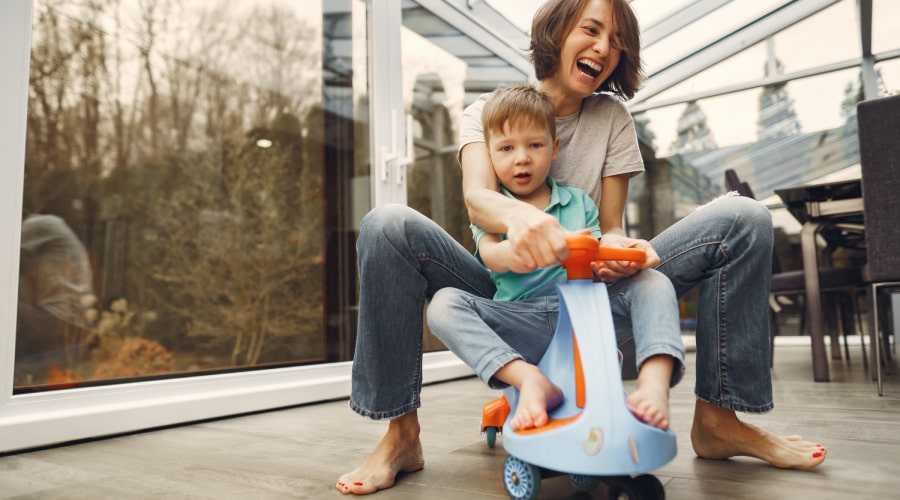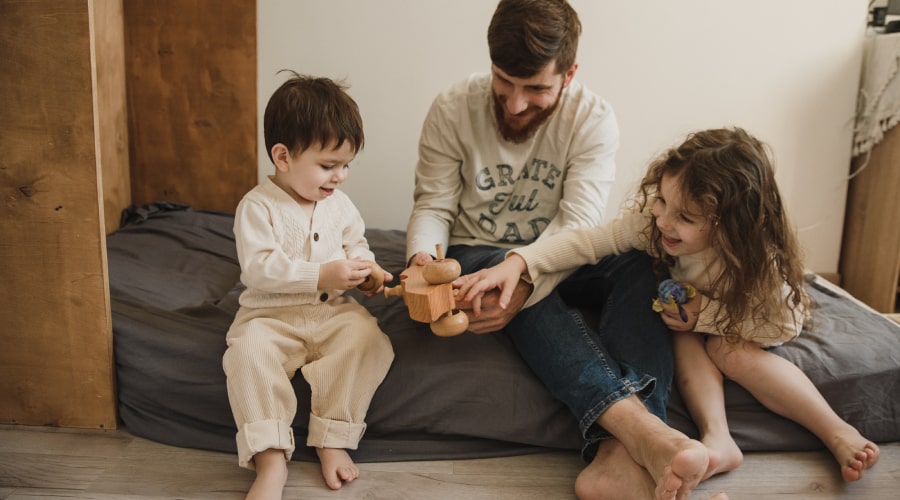settings
children
With Famly since
Barefoot without socks and shoes,
I shall talk a walk with you,
Out to where the summer winds rise up
To the roses and forget-me-nots.
I pick strawberries that grow by the roadside
Line them up on a straw
Which tickles so nice under my foot
I can feel it with my toe.
Thus starts The Barefoot Ballad, one of the most cherished children’s songs in Sweden, sung at just about every elementary school end-of-year ceremony in the country. In Sweden, few phenomena are as closely associated with the start of summer as children playing barefoot, and grubby feet are a celebrated symbol of a free and happy childhood.
Having grown up in this culture, I can still recall the annual ritual of running barefoot around the house on the first really warm spring day, feeling the cool grass against the soles of my feet and squeezing the moisture from the soft moss with my toes.
When I raised my own two daughters in the US many years later, I found that caregivers there didn’t necessarily share my infatuation with letting children play barefoot outdoors. People worried that children would be injured or infected with disease if they didn't wear shoes. I noticed children even wearing shoes indoors — at preschool, at school, and sometimes also at home. Some daycares and preschools in the US even have policies explicitly prohibiting bare feet.
That’s too bad, because children have a lot to gain from walking barefoot and it can be done safely, even in an ECE setting. And yes, even outdoors!

The benefits of letting toddlers walk barefoot
Wearing shoes affects everything from our gait and posture and foot development to the strength of our foot's arch. For example, we have scientific evidence to suggest that flat feet are far more common in children who usually wear shoes, than those who don’t. We also know the critical period for the development of the arch is before age six. This means that walking barefoot is especially important during early childhood.
But it's not just about children's feet — barefoot play affects brain development too.
With children, walking barefoot can:
- Improve motor skills. A 2018 study of children in Germany and South Africa suggests that barefoot play can contribute to improved motor skills, particularly when it comes to balance and jumping.
- Prevent injuries. People who go barefoot or wear minimalist shoes develop wider feet, which helps distribute the weight of the body more evenly and may prevent injuries.
- Strengthen children's feet. Conventional footwear can weaken the muscles in the foot, whereas going barefoot or minimally shod strengthens them, supporting normal gait, one 2018 study shows.
- Build new neural connections. Going barefoot stimulates thousands of nerve endings in the feet and activates the vestibular and proprioceptive systems in children's brains. This helps children orient their bodies in space, and develop skills like balance and coordination.
Angela Hanscom, a pediatric occupational therapist and author of the book Balanced and Barefoot recommends letting children go barefoot as much as possible, both indoors and outdoors.
“Walking outdoors offers natural messages to children’s feet as they walk on different-sized pebbles and uneven ground,” she writes. “The resistance and inconsistency nature offers integrates reflexes in the foot and forms strong arches. Going barefoot out in nature helps to develop normal gait patterns, balance and tolerance of touch in the feet, all of which provide a strong foundation for confident and fluid movement.”
This tactile feedback from walking barefoot is beneficial to children of all ages, not the least babies who are just learning to walk.

How to offer barefoot experiences at home and beyond
We’re all born to walk barefoot, and children usually don’t need much convincing to ditch the shoes. As a parent or caregiver, all you need to do is to support children's natural inclination to explore the world sans shoes, starting already in babyhood. Say “yes” to barefoot play as often as possible, and try to offer a variety of natural surfaces for children to walk on.
In a backyard as well as a childcare setting, creating a sensory walking path with different surfaces can be a fun way for children to explore different textures with their feet and promote a healthy sensory development.
When children shed their shoes and feel the ground beneath their feet, they gain awareness of their senses, their bodies and their surroundings.
These are some simple ideas for natural materials to use in a sensory path:
- Sand
- Pebbles/rocks
- Grass
- Pinecones
- Straw
- Dirt/mud
- Ground-covering plants
- Wood chips
- Moss
- Tree trunk slices
- Water
If you have access to nature trails, they too can be a good place for children to go barefoot.

Addressing risks and concerns about going barefoot
A common concern about young children walking barefoot is the risk of infection from bacteria and viruses in the ground.
In reality, children are far more likely to pick up an infection when they stick their fingers in their mouth and nose, rather than through their feet. Plus, the dark, moist environment of a shod foot is more conducive to fungal and bacterial growth than bare feet. The skin itself is a natural barrier protecting against infection, and the more a child walks barefoot, the tougher the skin becomes. This also decreases the risk of injury from cuts.
If you’re in a preschool or daycare setting, check what rules apply in your area before letting children go barefoot, and get the parents on board by explaining the benefits and how you plan to manage potential risks.
These tips will help you keep barefoot play time safe and enjoyable:
- Inspect the area visually to make sure there are no hazardous objects on the ground.
- On sunny days, check the temperature on surfaces like asphalt and sand, as they can get very hot.
- If tracking dirt and debris inside is an issue, keep a plastic bin with water and some towels nearby, where the children can rinse off.
- Don’t force children to go barefoot if they don’t want to.
In most cases, the benefits of barefoot walking by far outweigh the risks. Rather than fight a child’s desire to go barefoot, try to embrace it and remember that grubby feet are usually a sign of a happy child.
Besides, bare feet aren’t just for kids – why don’t you take your shoes and socks off and join in the fun? Your feet will thank you.
The big ideas
Get 1000s of free EY activities
Want over 7,000 activities? See them in a free 14-day trial. Filter to target learning areas, age groups and topics, and get inspired.
Get started









